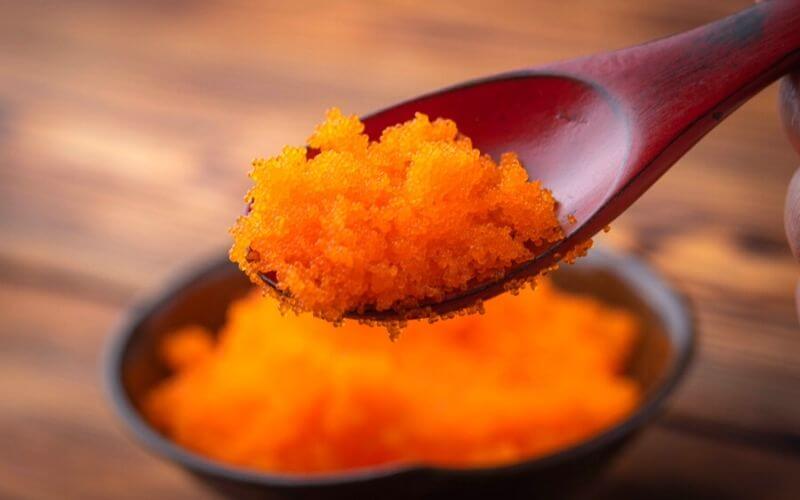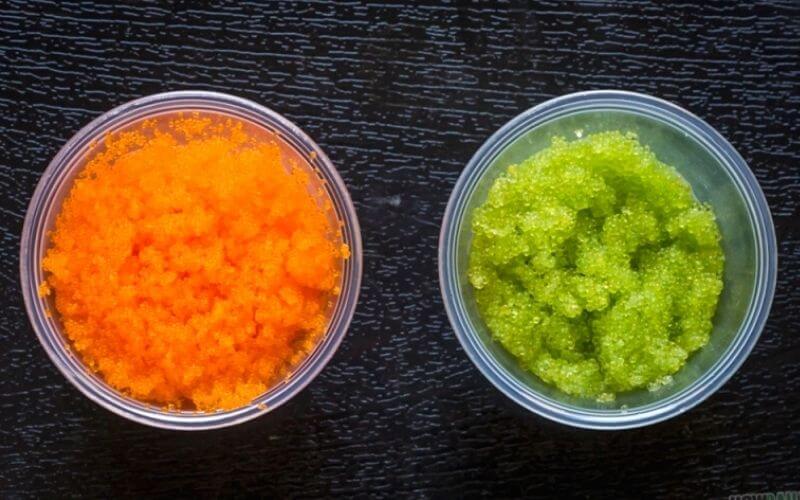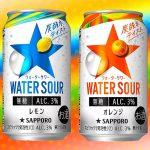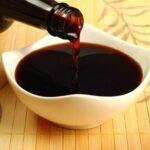Trying to be a more adventurous eater? Or are you venturing into the cooking of foreign delicacies? Either way, Japanese cuisine offers some of the tastiest and visually appealing dishes out there. On top of that, it uses some of the most intriguing ingredients you can imagine.
One of these gorgeous ingredients happens to be masago. Commonly used in sushi rolls, it adds a great pop of color to your plate. But what is masago in sushi rolls? This article will tell you a great deal about this cooking component and all the reasons why you should give it a try!
411 on Masago

Masago is also known as smelt roe, and put simply they are the edible eggs of the capelin fish. So, masago─ smelt roe are harvested from the silver-green capelin fish and used in the food industry.
These eggs are pale yellow and are often dyed orange, red, or yellow. This gives them a vibrant look, which in turn makes the sushi rolls they are in appear much more enticing. Moreover, masago fish eggs are pretty mild-flavored, which makes it a solid pairing for pickled ginger, wasabi, and soy sauce.
Health Benefits of Masago
Want a quick rundown on masago nutrition facts? Masago has a nutrition profile similar to its parent fish. One ounce of these masago capelin roe eggs has just 2 grams of fat. It also contains 6 grams of protein and less than one gram of fat.
Besides that, masago is rich in vitamin B2 and B12 which are great for the skin and nails. Moreover, these fish eggs contain plenty of essential minerals and nutrients like selenium, phosphorus, and folate.
These translate to some pretty awesome masago health benefits. There are very few fats and carbs in it, and you won’t have to worry about counting calories. Like other fish products, they have lots of protein and essential fatty acids, all of which are good for you.
The polyunsaturated fats in masago help reduce inflammation and keep your heart, muscles, and immune system healthy. Furthermore, the amino acids in the capelin eggs are essential for tissue repair and protein synthesis.
The Other Side of Masago
But things aren’t sunshine and rainbows with masago eggs. Some masago side effects include bloating and blood pressure as these capelin roe eggs are high in sodium. Moreover, the sushi dish is eaten with soy sauce and MSG, which makes it taste better but increases the overall sodium content.
On the other hand, those who are allergic or sensitive to seafood should avoid it altogether. But it goes beyond that─ some people get an allergic reaction from masago even though they aren’t allergic to seafood.
So if you haven’t tried masago before, have a tiny amount to gauge your body’s reaction to make sure you aren’t allergic to it. And it is best to consume masago dishes in moderation so that you don’t overdo the sodium.
Capelin fishing is also a concern for some. Sometimes other fish get caught and killed when catching capelin, and this can cause a steep decline in their population, as well as issues with overfishing.
Sourcing Your Masago Eggs

People are often at a loss when looking for capelin roe eggs. Where to buy masago that won’t burn a hole into your wallet. For starters, you can easily buy some online, but some people find that perishable ingredients go bad when bought and shipped over long distances.
Instead, you can track these eggs down in any Asian supermarket. Sure they will be pricier, but you’ll be guaranteed quality and freshness. You can also try looking for them in gourmet stores, and if you’re lucky you might even find them in your local grocery store.
Tobiko or Masago?

If you’re unfamiliar with sushi rolls, you may be confused by tobiko or masago. As far as the tobiko vs masago debate goes, the two aren’t all that different.
Tobiko are eggs that come from tropical fly fish. These are brightly colored and do not need to be dyed like masago. They have a mild, yet sweet-salty flavor and a pleasant crunch that contrasts well with the soft texture of sushi.
Like masago, tobiko is used to finish off sushi rolls and other dishes, and its bright red color makes it an attractive garnish for many other foods. However, tobiko has lots of cholesterol which means it should be eaten in small amounts.
Tobiko eggs are larger than masago, and in general, tobiko is supposed to be superior to masago. However, many restaurants substitute masago for tobiko to cut costs. However, masago won’t have that pleasant crunchy sweetness of tobiko.
Masago Sushi

We are used to seeing just the masago sushi roll, but in reality, masago can be used in all kinds of salty and umami dishes. They make a great topping for brown rice, sushi rice, and noodles, as well as Japanese curries, katsu, and even Asian-fusion meals. You can also use it to garnish salads, roast veggies, baked fish, and other savory dishes.
Because masago comes cleaned and prepared, you don’t really need to do anything to it. Just spoon some out of the jar they come from and incorporate it into your cooking. The jar will also come with instructions on how to correctly store the masago, and you can keep it in the fridge to extend its usage.
Speaking of freezing, were you aware of the know-hows of keeping sushi in the fridge? Check that out here.
Got More Questions?
Below you will find answers to questions people often have about masago.
01. What is Masago Gunkan Maki?
This is a sort of sushi roll, where the nori-wrapped rice is topped with masago eggs. This dish was invented by Ginza Kyubei, a famous Japanese restaurant, and is also called a Battleship Maki.
02. What is the Difference between Masago, Tobiko and Caviar?
All three are fish roe or eggs, but each comes from different kinds of fish. Because of this, they each have their own flavor, texture, and price point.
03. Is Tobiko Better Than Masago?
Tobiko is more expensive than masago and is considered to be of better quality. Tobiko also doesn’t need to be dyed and has a nice crunchy texture, but is harder to find when compared to masago.
Final Say
Well, now you know the answer to the question: what is masago in sushi? These delicate fish eggs make any plate of maki rolls much prettier and more interesting to eat. If you’re worried about the flavor, you will be relieved to know it has a very mild taste.
Whether you are trying to cook new and exciting Japanese dishes or want to order the best stuff at an Asian restaurant, you will have this particular ingredient nailed. Who knows, you might even impress your friends with an interesting fact or two about capelin roe!






